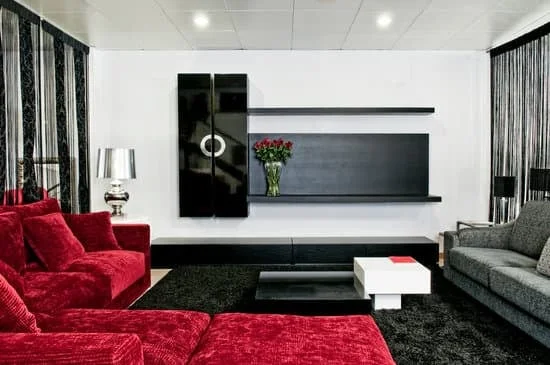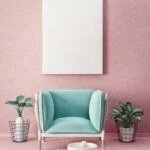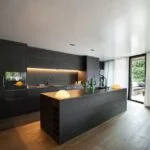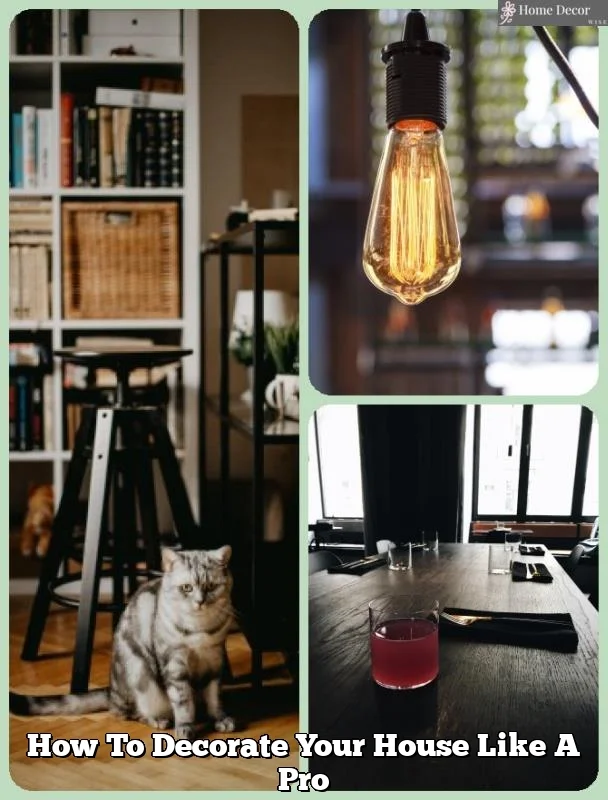Feeling overwhelmed with decorating your home? Don’t worry, you’re not alone. Many people struggle with turning their house into a cozy and stylish space. In this blog post, we will provide practical tips and ideas for those who don’t know how to decorate their home.
The task of transforming an empty space into a visually appealing and inviting environment can be daunting. From selecting the right colors to choosing furniture that suits your style and needs, there are many decisions to make along the way. Fortunately, we are here to guide you through the process and help you create a comfortable and aesthetically pleasing home.
Whether you’re starting from scratch or simply looking to refresh your current decor, our goal is to empower you with knowledge and inspiration to confidently tackle your home decoration project. We understand that everyone has their own unique style preferences, so we will provide a range of design ideas and resources to cater to different tastes.
Stay tuned as we delve into topics such as assessing your personal style, utilizing online resources for inspiration, choosing the perfect color scheme, selecting furniture and arranging it effectively, lighting design tips, accessorizing and styling techniques, budget-friendly options, and even when (and why) it may be helpful to enlist the services of an interior designer.
By the end of this blog post, you will be equipped with the knowledge and inspiration needed to confidently decorate your home. Don’t let the fear of not knowing how to decorate hold you back – embrace your creativity and transform your space into one you love coming home to.
Assessing your style
Assessing your style: The first step in decorating your home is to identify your personal style. It’s important to have a clear understanding of your design preferences in order to create a cohesive and visually appealing space. In this section, we will guide you through a series of questions and exercises that will help you assess your style and establish a foundation for your decorating journey.
When determining your personal style, it can be helpful to take a step back and evaluate what elements attract you the most. Consider the colors, patterns, textures, and furniture styles that resonate with you. Are you drawn to modern and minimalist aesthetics, or do you prefer more traditional and ornate designs? By identifying these preferences, you can begin to curate a look that reflects your personality and creates an environment where you feel at home.
One exercise that can help in assessing your style is creating a mood board. Gather images from magazines, websites, or even take pictures of spaces that inspire you. Look for common themes among the images: Is there a recurring color palette?
Do you lean towards certain types of furniture or patterns? Taking note of these details will provide valuable insight into your design preferences. Additionally, consider the atmosphere you want to cultivate in each room – do you envision a cozy retreat or an energizing workspace?
Once you have established your preferences, it’s important to create a cohesive look throughout your home. This doesn’t mean every room needs to look identical, but there should be an underlying theme that ties everything together. Consistency in design elements such as color scheme, furniture styles, or accent pieces can help achieve this cohesiveness. Remember that experimentation is key – don’t be afraid to mix different styles or incorporate unexpected elements into your decor.
Utilizing online resources
Online resources have made it easier than ever to find inspiration and expert advice for home decor. Whether you lack an eye for design or simply want to explore new ideas, utilizing online resources can be a game-changer. From interior design websites to blogs and social media platforms, there are countless sources of inspiration waiting to be discovered.
Interior design websites are a great starting point when seeking inspiration for your home decor. These websites often feature curated galleries of beautiful interiors, showcasing different styles, color schemes, and furniture arrangements. They can provide ideas for every room in your house, from the living room to the bedroom, and even outdoor spaces. Some popular interior design websites include Houzz, Decorist, and Apartment Therapy.
Blogs dedicated to home decor are another valuable resource. Many interior designers and home enthusiasts share their expertise and creative ideas through blog posts. These blogs cover a wide range of topics, from DIY projects and budget-friendly tips to trends and design principles. By following these blogs regularly, you can stay updated on the latest trends and gather practical advice for decorating your own space.
Social media platforms like Instagram and Pinterest have also become powerful tools for finding design inspiration. On Instagram, you can follow interior designers or hashtags related to home decor to discover stunning visuals and unique ideas.
Pinterest is known for its visual bookmarking system, allowing users to gather images of their favorite interior designs in one place. By creating mood boards or pinning images that resonate with your style preferences, you can curate a digital collection that serves as a reference point during the decorating process.
In addition to finding inspiration online, virtual room planners can help you visualize your desired aesthetic before making any changes in your space. These digital tools allow you to experiment with different furniture arrangements, color schemes, and decor elements without having to physically move anything around. They provide a realistic representation of how your room will look once decorated so that you can make informed decisions about your design choices.
By utilizing online resources like interior design websites, blogs, social media platforms, and virtual room planners, you can gain inspiration, access expert advice, and visualize your desired aesthetic. These tools make it easier than ever to explore different styles, coordinate colors, and create a cohesive look in your home.
Don’t be afraid to embrace the vast world of online decor resources – they can be a valuable asset in your journey to transform your space into one you love coming home to.
| Resource Type | Description |
|---|---|
| Interior design websites | Websites that feature curated galleries of beautiful interiors and offer ideas for every room in the house. |
| Blogs | Blogs dedicated to home decor where interior designers and enthusiasts share their expertise and creative ideas. |
| Social media platforms (Instagram & Pinterest) | Platforms that allow users to find design inspiration through following interior designers or hashtags (#), creating mood boards, or pinning images. |
| Virtual room planners | Digital tools that help users visualize their desired aesthetic by experimenting with furniture arrangements, color schemes, and decor elements. |
Choosing a color scheme
The Psychology of Colors
When choosing a color scheme for your home, it’s essential to consider the psychology of colors. Different colors can evoke various emotions and moods, so understanding their effects can help you create the desired ambiance in each room.
For example, warm colors like red, orange, and yellow tend to create a cozy and energetic atmosphere. They are perfect for spaces where you want to encourage conversation and activity, such as the living room or kitchen. On the other hand, cool colors like blue, green, and purple promote a sense of calmness and relaxation. These are great choices for bedrooms or areas where you want to unwind.
Neutral colors such as beige, gray, and white are versatile and timeless. They provide a soothing backdrop that allows other elements in the room to stand out. You can easily incorporate pops of color into neutral spaces with accessories or furniture pieces.
Coordinating Colors
Once you have an understanding of how colors impact mood, it’s time to coordinate them effectively within your home. One approach is using the color wheel as a guide. Complementary colors (opposite on the wheel) create high contrast and add excitement to a space. Analogous colors (next to each other on the wheel) create harmony and visually pleasing combinations.
Consider also incorporating different shades or tones of a particular color throughout your home for cohesion. For example, if you choose blue as your main color, use varying degrees of light blue, navy blue, or teal in different rooms. This creates a cohesive flow while still allowing individual spaces to have their own unique identity.
Trendy Color Schemes
If you’re looking for some inspiration for trendy color schemes to elevate your interiors, here are a few popular options:
- Neutral with pops of vibrant color: Stick with neutral tones like whites or grays as dominant hues while adding vibrant pops of color through accessories, artwork, or furniture.
- Earthy and natural: Bring nature indoors with earthy tones like greens, browns, and warm neutrals. This color scheme creates a calming and organic atmosphere.
- Monochromatic elegance: Choose one color and use different shades and tones of it throughout the room. This creates a sophisticated and harmonious interior.
Remember to consider your personal preferences and the overall style you want to achieve when selecting a color scheme. Experiment with different combinations, test paint swatches on your walls, and don’t be afraid to take risks. The right colors can truly transform the ambiance of your home.
Furniture selection and placement
When it comes to decorating your home, selecting the right furniture pieces and arranging them in a harmonious way is key. In this section, we will provide you with guidance on how to navigate the world of furniture selection and placement.
Choosing Furniture that Suits Your Style and Practical Needs
Before diving into furniture shopping, it’s important to assess your personal style and consider your practical needs. Ask yourself questions like: Do I prefer minimalist or eclectic designs? Is durability more important than aesthetics? Understanding your preferences will help you narrow down your options.
When selecting furniture, look for pieces that not only reflect your style but also serve a purpose. If you have limited space, consider multi-functional furniture like storage ottomans or sofa beds. Remember, it’s about finding the right balance between form and function.
Optimizing Space and Creating Balance
Once you have chosen your furniture pieces, it’s time to think about their placement within each room. Here are some techniques for optimizing space and creating a balanced environment:
- Measure before placing: Before moving any furniture, measure the dimensions of your room to ensure everything fits comfortably without overcrowding the space.
- Create a focal point: Identify a focal point in each room, such as a fireplace or a statement piece of furniture, and arrange other pieces around it. This helps create a sense of balance and visual interest.
- Consider traffic flow: Arrange your furniture in a way that allows for easy movement around the room. Avoid blocking doorways or pathways with large pieces of furniture.
- Experiment with different layouts: Don’t be afraid to try different arrangements until you find what works best for your space. Use online tools or apps that offer virtual room planners to visualize different layouts before physically moving any furniture.
Remember, finding the perfect placement may require some trial and error. Take into account both aesthetic appeal and functionality when arranging your furniture.
By following these tips on furniture selection and placement, you’ll be on your way to creating a well-designed and functional home. The next section will delve into the often-overlooked aspect of interior design – lighting design.
Lighting design
Selecting the right lighting fixtures
When it comes to selecting the right lighting fixtures for your home, it’s essential to consider both functionality and aesthetics. Start by evaluating the different types of lighting available: ambient, task, and accent lighting. Ambient lighting provides overall illumination for a space, while task lighting focuses on specific areas where you need adequate light for activities like reading or cooking. Accent lighting is used to highlight architectural features or artwork.
Next, consider the style and design of your space. Choose lighting fixtures that complement your overall decor and enhance the desired ambiance. For example, if you have a modern or minimalist style, sleek and simple fixtures with clean lines may be a good fit. On the other hand, if your home has a more traditional or rustic look, you might opt for chandeliers or vintage-inspired sconces.
Implementing various lighting techniques
In addition to selecting the right lighting fixtures, implementing various lighting techniques can help create an inviting ambiance in your home. Here are some popular techniques to consider:
- Layered Lighting: This technique involves using a combination of ambient, task, and accent lighting to create depth and dimension in a space. By layering different light sources at varying heights throughout a room, you can add visual interest while also providing practical illumination.
- Dimmers: Installing dimmer switches allows you to adjust the brightness of your lights according to different occasions or moods. Dimmers are particularly useful in living rooms, bedrooms, and dining areas where versatility is key.
- Highlighting Focal Points: Use accent lights like track lights or spotlights to draw attention to focal points in your home, such as art pieces, architectural details, or unique furniture items.
- Under-Cabinet Lighting: In kitchens and bathrooms, under-cabinet lighting can enhance visibility while also adding an elegant touch. LED strip lights are popular for this purpose, as they provide a soft and even glow.
Tips for utilizing natural lighting effectively
Natural lighting can play a significant role in creating an inviting atmosphere in your home. Here are some tips for utilizing natural light effectively:
- Window Treatments: Choose window treatments that allow you to control the amount of natural light entering your space. Sheer curtains or blinds can diffuse harsh sunlight while still providing a soft glow.
- Mirrors: Place mirrors strategically across from windows to reflect and amplify natural light throughout the room. This technique can make smaller spaces feel more open and spacious.
- Clear Obstructions: Keep windows clean and clear of any obstructions like furniture or plants that may block sunlight from streaming into your home.
Remember, lighting design is not just about functionality but also about setting the right mood and atmosphere in each room of your home. Experiment with different lighting fixtures, techniques, and natural lighting strategies to create a warm, welcoming, and visually appealing environment.
Accessorizing and styling
Accessorizing and styling: Accessories are the finishing touches that bring a room together. They have the power to add personality, depth, and visual interest to a space. In this section, we will provide insight into how to choose and style accessories in order to create a cohesive and visually appealing result.
When it comes to choosing accessories, it’s important to consider the overall style and theme of your space. If you have a modern and minimalist aesthetic, sleek and minimalistic accessories would work best. On the other hand, if you prefer a bohemian or eclectic style, you can incorporate more textured and vibrant pieces. By staying true to your personal style, your accessories will seamlessly blend with the rest of your decor.
Mixing textures, patterns, and sizes is key when styling accessories. This adds visual interest and prevents your space from looking flat or one-dimensional. Experiment with different textures such as velvet, jute, or leather for an added touch of luxury or warmth. When it comes to patterns, consider mixing geometric patterns with organic ones for a balanced look. As for sizes, varying heights create visual impact while smaller items can be layered on larger ones for depth.
Artwork is also an important aspect of accessorizing. Whether it’s paintings, photographs, or sculptures, artwork can transform a blank wall into a focal point. Choose pieces that resonate with you personally or evoke certain emotions. Don’t be afraid to mix different styles of art for an eclectic gallery wall effect.
In addition to artwork, rugs are another accessory that can tie a room together. They not only add color and pattern but also provide comfort underfoot. When selecting rugs, consider their size in relation to the furniture placement and ensure they complement the overall color scheme of the room.
Lastly, curtains can serve both functional and decorative purposes in accessorizing a space. They add softness while also controlling natural light and providing privacy if needed. Choose curtains that contribute to the overall aesthetic of the room and select colors and patterns that complement the existing decor.
Budget-friendly options
Decorating your home doesn’t have to be an expensive endeavor. In this section, we will explore budget-friendly options and provide you with creative ideas and DIY hacks to achieve a stylish look without breaking the bank.
One of the best ways to save money while decorating your home is by opting for thrift store finds. Thrift stores often have hidden gems that can be transformed into beautiful pieces with just a little bit of love and creativity. Look for unique furniture pieces, decorative objects, or artwork that can add character to your space. You can even give old items a fresh coat of paint or reupholster them to match your desired aesthetic.
Another budget-friendly option is upcycling projects. Instead of buying new furniture or decor items, consider repurposing or refurbishing existing ones. For example, you can turn an old ladder into a bookshelf, transform crates into stylish storage units, or give new life to vintage suitcases by using them as side tables.
In addition to thrift store finds and upcycling projects, don’t forget about the power of DIY hacks. There are countless resources online that offer step-by-step tutorials for creating your own decor items. From crafting macrame wall hangings to making your own throw pillows or artwork, these DIY projects allow you to personalize your space while keeping costs low.
Remember, decorating on a budget requires being resourceful and thinking outside the box. Don’t be afraid to experiment and get creative with limited resources. With these budget-friendly ideas and DIY hacks, you can achieve a stylish look for your home without spending a fortune.
Seeking professional help
Seeking professional help can be a wise decision when it comes to decorating your home. While the tips and resources provided in this blog post can empower you to tackle the task on your own, there may come a point where you feel stuck or overwhelmed. In such cases, an interior designer can step in and offer their expertise to bring your vision to life.
One of the main benefits of hiring an interior designer is their ability to provide a fresh perspective. They have extensive knowledge and experience in the field, allowing them to see possibilities and potential that you may have overlooked. They can assess your space objectively and offer creative solutions tailored to your specific needs and preferences.
Furthermore, interior designers have access to a wide range of resources and contacts that can help bring your vision to life. They are well-connected with suppliers, contractors, and vendors, which can save you time and effort in finding reliable professionals for your project. With their guidance, you can navigate the world of furniture stores, fabric options, paint swatches, and more with ease.
Now, you might be worried about the cost of hiring an interior designer. While it’s true that some designers charge high fees, there are also many affordable options available. When looking for a designer within your budget, consider reaching out to local design schools or universities that offer design programs. Often, students or recent graduates are looking for opportunities to gain practical experience and may be willing to work at a lower rate.
Conclusion
In conclusion, decorating your home can be a daunting task, but it doesn’t have to be. With the practical tips and ideas provided in this blog post, you will be well-equipped with the knowledge and inspiration needed to confidently tackle your home decor. Remember that you are not alone in feeling overwhelmed – many people struggle with turning their house into a cozy and stylish space.
Throughout this article, we have covered various aspects of home decoration, including assessing your style, utilizing online resources for inspiration and advice, choosing a color scheme, selecting and arranging furniture, lighting design, accessorizing and styling, budget-friendly options, and seeking professional help if needed. By following the guidance provided in each section, you will gradually develop a cohesive look for your living space.
Lastly, don’t let the fear of not knowing how to decorate hold you back. Embrace your creativity and have fun transforming your space into one that reflects your personality and brings you joy. Remember that decorating your home is a process – it may take time to curate the perfect ambiance.
Experiment with different elements and arrangements until you find what works best for you. Your home should be a place where you feel comfortable and happy coming back to every day.
Frequently Asked Questions
How do you decorate your home when you dont know how?
When you don’t know how to decorate your home, it can be overwhelming to decide where to start. One approach is to begin by identifying your personal style and preferences. Take some time to explore different home decor styles and gather inspiration from various sources such as magazines, websites, or even visiting showrooms or friends’ homes.
Once you have a sense of what appeals to you, consider creating a mood board or collecting images of rooms that embody the aesthetic you want to achieve in your home. This will help guide your decision-making process and give you something tangible to refer back to when shopping for furniture, accessories, and artwork.
How do you decorate when you don’t know how do you decorate?
When you find yourself unsure about how to decorate a space and are uncertain about your own decorating skills or taste, one option is seeking assistance from an interior designer or decorator. These professionals have the expertise and knowledge to guide you through the entire decorating process.
They can help assess your needs, offer advice on layout and color schemes, suggest furniture arrangements, select fabrics and materials, and even source decor items that align with your desired style and budget. Collaborating with an interior expert ensures that your home’s decor reflects your personality while achieving a cohesive and aesthetically pleasing atmosphere.
How to decorate your home for beginners?
Decorating your home as a beginner involves starting with simple steps that gradually build up the overall look and feel of each room. Begin by decluttering spaces and organizing any existing items in order to create a clean canvas for decorating. Next, focus on establishing a basic color scheme for each room; consider using neutral tones as a foundation for versatility in future decor choices.
Explore different textures, patterns, and materials for cushions, curtains or rugs while keeping functionality and comfort in mind. Experiment with arranging furniture in different ways until finding layouts that maximize space utilization while maintaining an inviting atmosphere. Lastly, add personal touches through art pieces or photographs that evoke positive emotions or tell stories unique to you within the space.

I’m thrilled to be your companion on this exciting journey through the world of home decor and design. With a passion for turning houses into homes and a keen eye for the finer details, I’m here to help you transform your living spaces into beautiful, functional, and meaningful havens.





